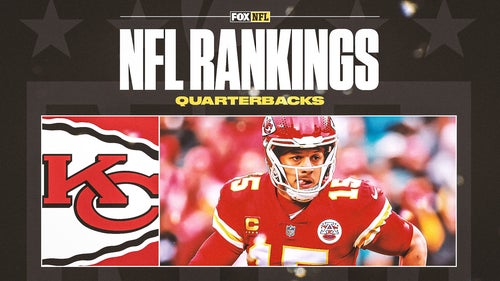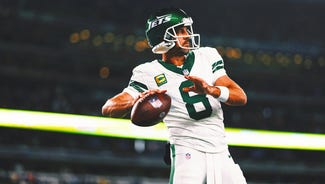
Exploding Beyond .500: Why Green Bay Packers beat Seattle Seahawks
Dec 11, 2016; Green Bay, WS, USA; Green Bay Packers wide receiver Jeff Janis (83) celebrates after scoring a touchdown in the fourth quarter as the Green Bay Packers host the Seattle Seahawks at Lambeau Field. Mandatory credit: Adam Wesley/Green Bay Press Gazette via USA TODAY NETWORK
The Packers came out this past weekend with a vengeance, obliterating the Seattle Seahawks on their way to a 38-10 shellacking to get themselves to 7-6.
Even with Aaron Rodgers sitting out practically a whole quarter of action, this game was out of hand fast for the Seahawks, and they never managed to even make a realistic dent in their deficit.
Where did this performance come from? In a season where the Packers have often struggled to look anything like the team fans remember from prior years, how did they pull this game out of nowhere — on one of the league’s perennial best defenses, no less?
Let’s look into that.
Dec 11, 2016; Green Bay, WS, USA; Green Bay Packers player Micah Hyde is tackled by Seattle Seahawks player George Fant following a fourth quarter interception at Lambeau Field. Mandatory credit: William Glasheen/Post-Crescent via USA TODAY NETWORK
Taking it away early and often
Takeaways in bunches used to be something which happened with regularity for the Green Bay defense. From 2009-2014, Green Bay was in the top-8 among in the league in this statistic four different times, leading or tying for the league lead twice in that span. This (in addition to an offense resistant to risky plays and turnovers themselves) was a major part of how the team routinely has been among the league’s best in turnover ratio (five top-10 finishes, with four in the top-5 and twice leading the NFL).
That’s slowly been changing, however. We saw some of that begin in 2015, with the Packers securing their lowest number of turnovers since before 2009 (22), but the trend was looking to take another major step down this year. A big piece of that comes from a secondary which has been unable to come away with interceptions at anywhere close to their prior rate. Turnovers league-wide have held a pretty stable 60-40 rate which leans towards interceptions, so when a team grabs less of those their rate is more dramatically affected (that counts even more for Green Bay, which has always struggled with fumble luck during Mike McCarthy’s tenure).
Looking directly at their interception totals, we see they had picked up 30, 24, and 31 from 2009-2011, respectively; since, the best they’ve managed is 18 — still good for top-8 finishes among NFL teams in those years (2012 and 2014), but far under their previous totals. This subject deserves its own longform post, but for a quick summary: this is in-line with the league as a whole (turnovers have taken a massive overall dip throughout the league since at least 2009), but it still is worrisome for a defense which once prided itself on turnover-forcing prowess.
The Packers came into this week having forced a mere 12 turnovers (8 of which were INTs); prorate that across a full year, they were set for just 16 takeaways on the year — by far their worst showing since before 2009. Combine that with an uptick in giveaways (17 through 12 games, which prorates to over 22 for a full year; would be their worst showing in a full Rodgers season) and they were looking at possibly their worst showing in terms of turnover differential — even more damaging than when Rodgers missed half of 2013. It’s no wonder the team struggled for most of the season just to reach 6-6.
Against Seattle, this had to change it some meaningful fashion. It did so to a startling degree.
The Packers came away with five different interceptions of Russell Wilson here — that’s as many as they had from their defensive backs combined through the first twelve games of 2016.
Here’s how those went:
Along with all of those, there was even a late fumble when everything had already been decided, giving Green Bay a six-pack of takeaways on the afternoon. The showing was so good it took Green Bay all the way up from a -5 turnover ratio to a +1, and it gave us the sort of perfromance we hadn’t seen from this group since that fateful 2014 NFC Championship Game against these same Seahawks.
Glad to see it turned out differently this time.
Dec 11, 2016; Green Bay, WS, USA; Green Bay Packers cornerback Damarious Randall (23) celebrates after an interception against the Seattle Seahawks as the Green Bay Packers host the Seattle Seahawks at Lambeau Field. Mandatory credit: Adam Wesley/Green Bay Press Gazette via USA TODAY NETWORK
0-for-2 on 2-for-1
I’ve spoken ad naseum on 2-for-1s this year, and the Packers’ inability to properly handle them from both sides of the coin. When they’ve been the team with this chance, they’ve failed to utilize their opportunities to get back into games or expand their leads; when they’ve had to defend them, they’ve tended to allow the opposition to use these as a boost to overtake or further bury them.
Here we saw them properly handle it from the defensive side.
The first drive was what eventually became Wilson’s second INT, right before halftime. The second ended in Wilson’s third INT. Each time, Green Bay almost screwed up, allowing Seattle to either drive right to the end zone or have a decently open shot at it. The INTs saved them big time, letting them hold their large advantage in its entirety as they got the ball back in the second half.
If the team had not come away with those INTs, this could have been a dramatically different game. Seattle could have scored on both of these halftime-bracketing chances, moving them up from a 21-3 deficit to any of these possible options:
Any of those scores changes so much. This large lead gave Green Bay breathing room on offense and let the defense pin back their ears without fear of being run on. It also allowed McCarthy to rest Rodgers for the majority of the fourth quarter. The 28-3 lead gave them four scores worth of breathing room at that point. Had Seattle gotten some points in those drives around halftime, we are looking at maybe even just a 10 point lead — and that assumes Green Bay still picks up its fourth touchdown of the game in the same manner which they actually did.
No way is Rodgers getting rest in that situation unless he physically can’t be on the field, and with a guy who’s visibly limping between plays at that point he needs all the rest he can get. His injuries have been piling up (to go with the injured hamstring, he now has an injured calf), so he can’t be expected to evade in the way he normally would. All it would take is one more unfortunate hit, and those postseason hopes would be completely wiped away.
More than anything, we can thank the defense’s play in the 2-for-1 situation for giving him the chance to avoid that eminently possible outcome.
Dec 11, 2016; Green Bay, WI, USA; Green Bay Packers wide receiver Jordy Nelson (87) spikes the football with wide receiver Randall Cobb (18) after scoring a touchdown in the second quarter during the game against the Seattle Seahawks at Lambeau Field. Mandatory Credit: Benny Sieu-USA TODAY Sports
Picking apart the secondary
For years, the Seattle secondary has been one of the league’s most recognizably skilled units (Legion of Boom), and it has been the main crux of a scoring defense which has been the NFL’s best for four season’s running. Even though they were going to be missing Earl Thomas for only the second time in his career, everything pointed to this being a chess match between Rodgers and the guys on the back end for the Seahawks to see who could best force their will on the opposition.
Rodgers came out ahead by a margin that had never been dropped on the group as we’ve known them. He completed 18 of 23 passes on them, picking up 246 yards and 3 TDs on his way to a 150.8 passer rating — the best showing against the Legion of Boom. Even with the caveat of no Earl Thomas being accounted for, that’s impressive.
Rodgers picked through them with an assortment of passes. He went outside the numbers often, with quick over-the-top throws to Davante Adams (4 catches for 104 yards, including a 66 yard TD on the first drive) being the most cogent example. He surgically sliced through them in short yardage too, with Nelson (6 catches, 41 yards, 2 TDs) being his reliable close-space target. He got deep plays in a way Seattle usually just doesn’t allow most weeks, with 6 passing plays which went for at least 15 yards (172 yards and a TD on those receptions; spread between Adams, Randall Cobb, Jared Cook, and Ty Montgomery).
Perhaps the most impressive part of this? Rodgers did it all in just over three quarters. Defensive stops were necessary help for that, but without Rodgers having the offense humming in the first 45 minutes he wouldn’t have got that long rest at the end.
Dec 11, 2016; Green Bay, WI, USA; Green Bay Packers wide receiver Ty Montgomery (88) tries to break a tackle by Seattle Seahawks safety Steven Terrell (23) in the first quarter at Lambeau Field. Mandatory Credit: Benny Sieu-USA TODAY Sports
A positive rushing committee
For much of the Packers’ struggles in 2016, an area many could point to was a struggling running game.
With injuries and ineffectiveness tearing apart the expected rotation almost immediately, the team has had to try cobbling together healthy bodies the spot — and even that didn’t work for the most part.
Eddie Lacy has missed most of the year and went on IR weeks ago. James Starks busted up his knee and missed about a month; since returning, he’s been the same guy — which is to say, not good. Don Jackson was brought up from the practice squad; he too got injured. They made a trade for Knile Davis; he got cut not even three weeks later. With all these problems, Rodgers had to shoulder the passing AND rushing loads, leading the team on the ground while also throwing an exorbitant number of passes each week. It’s surprising it took so long for him to wear down and pick up injuries like he has the past three weeks.
Luckily, it seems the team finally has the workable options at that spot that can take some of the burden off him; most of that showed up here to an impactful degree.
Back early in the year, Ty Montgomery started getting some carries as a rusher despite his usual position being wide receiver; it took a few games, but he started to become effective at it. His skills with the ball in his hands bring a dynamic this offense hasn’t really ever had, and he can also pound the ball in the middle in spurts as well.
Dec 11, 2016; Green Bay, WI, USA; Green Bay Packers running back Christine Michael (32) runs with the football between Seattle Seahawks safety Steven Terrell (23) and linebacker K.J. Wright (50) in the fourth quarter at Lambeau Field. Mandatory Credit: Benny Sieu-USA TODAY Sports
Christine Michael is a newer pickup, and brings a level of power someone like Montgomery can’t be expected to consistently provide. He brings the ability to shoulder a workload as well — he’s actually Seattle’s rushing leader for the year right now despite getting cut by them a month ago.
Aaron Ripkowski is not a high-workload guy, but he is such a forceful runner when he does get carries, and recently that has been utilized more by the Packers (as evidenced by him picking up Green Bay’s first two non-Rodgers rushing touchdowns in the past three games).
Even other non-runners have gotten in on the action — particularly Jeff Janis.
Against Seattle, Montgomery was the first option; he got 12 assorted touches and turned those into 86 yards and a touchdown. Michael acted as a powerful change-of-pace; he garnered 10 carries for 36 yards. Ripkowski didn’t do much here, but Janis’ involvement saw him pull of his second strong sweep run in as many weeks, this time for a touchdown.
Mainly through these guys, we saw the Packers pick up 93 yards and 2 TDs on the ground. There were three different plays among those which went for at least 10 yards on the ground; each of them picked up one of them.
It wasn’t a dominant effort, but it was just the right level of balance for a team which had been sorely lacking it during most of the year.
Oct 30, 2016; Atlanta, GA, USA; Green Bay Packers wide receiver Jordy Nelson (87) celebrates his touchdown catch with guard T.J. Lang (70) in the first quarter of their game against the Atlanta Falcons at the Georgia Dome. Mandatory Credit: Jason Getz-USA TODAY Sports
High-end protection
It can and should be said every week: this Green Bay line is the best pass blocking unit in the NFL. In Green Bay’s biggest game of the year, they were on full display for what might be their best showing yet.
Seattle came in as a top-10 unit in terms of forcing pressure; to go with that, they were also returning their best and most important lineman in Michael Bennett. Bennett (18th), Frank Clark (28th) and Cliff Avril (41st) all rate out well among edge rushers in terms of Pro Football Focus’ grading system; when Bennett slides in as a defensive tackle, the unit is enormously difficult to block. That would be a tall enough task on its own, but add in the injuries Rodgers had picked up in previous weeks (hamstring) and early in this game (calf), and the line’s burden was at its highest point.
It didn’t matter one bit.
The Green Bay offensive line only allowed a grand total of six hurries and a sack to this vaunted front, giving their quarterback time and space to make his plays with zero fear of being hit.
Praise should go to each and every one of them. David Bakhtiari continues to prove himself well worth the contract upgrade and has firmly entrenched himself among the top left tackles in the league. Bryan Bulaga acts as a great bookend, sealing off the right side with aplomb. T.J. Lang returned from a recent injury, giving the line back their best overall player.
Lane Taylor isn’t as good as the guy he replaced, but he’s been able to do pretty well as this year’s left guard. J.C. Tretter started the year playing well at center; since his injury a few weeks back, Corey Linsley has been at least as good while retaking that role after his own injury held him out at the start of the year.
Much praise is thrown to the offensive lines in Dallas and Oakland; the way these guys pass block for Rodgers, more people should be talking about the Green Bay line. I’ll settle for more continued dominance of any and all opposition by them in the meantime.
More from Lombardi Ave
This article originally appeared on








































































































































